Fleet Legend, Alfa
At the end of 50-s, when the program for the creation of domestic anti-submarine plates began, it was decided to create highly automated and high-speed plates. The submarine of the 705 project (code Lira, according to the NATO classification "Alfa") is perhaps the brightest and most ambiguous ship in stories domestic submarine shipbuilding.
Simultaneously with the work on nuclear submarines of the 627, 645 and 671 projects, Leningrad SKB-142 underwent an energetic search for new, non-traditional technical solutions capable of providing a qualitative breakthrough in the development of submarine construction. In 1959, one of the leading specialists of the SKB, AB Petrov came out with a proposal to create a compact single-shaft complex-automated high-speed nuclear submarine with a reduced crew. According to the plan, the new ship, a kind of “underwater fighter-interceptor”, having a submerged speed exceeding the 40 nodes, was able to reach a predetermined point of the ocean in an extremely short time to attack the underwater or surface enemy. With the timely detection of the enemy torpedo attack, the submarine was supposed to move away from the torpedoes, pre-launching a volley from their torpedo tubes.
The small displacement of the boat (of the order of 1500 t) in combination with a powerful power plant should have provided a quick set of speed and high maneuverability. The submarine had to move away from the mooring wall in a matter of minutes, quickly turn around in the water area and leave the base to solve the combat mission, and after returning “home” to moor independently.
After a very heated debate with the participation of industry and the Navy, as well as a number of significant changes to the project, the idea of such a submarine was supported by the leadership of the Ministry of the Judiciary and the military. In particular, the Minister of the shipbuilding industry B.E. Butoma and the Commander-in-Chief of the Navy S.G. Pots.
The technical proposal for the project was prepared at the beginning of 1960 of the year, and on 23 on June 1960, a joint resolution of the Central Committee of the CPSU and the USSR Council of Ministers on the design and construction of a submarine of the 705 project was issued. 25 in May 1961 appeared another decree allowing the scientific management and the chief designer of the project, with sufficient justification, to deviate from the norms and rules of military shipbuilding. This largely “untied the hands” of the creators of the new nuclear submarine, allowed to embody the most ambitious, advanced time technical solutions into its design.
The work on the 705 project was headed by the chief designer MG Rusanov (in the 1977, he was replaced by VA Romin). General management of the program was entrusted to Academician A.P. Alexandrova. The main observers from the Navy were VV Gordeev and K.I. Martynenko. Creating a submarine project 705 was, according to the Secretary of the CPSU Central Committee D.F. Ustinov, who oversaw the defense industry, a "nationwide task." To participate in the program attracted powerful scientific forces, in particular, academicians V.A. Trapeznikova and A.G. Iosif'yana.
The submarines of the 705 project (then 705K) were intended for the destruction of enemy submarines when they left the bases, at sea crossing, and also at positions of intended use weapons against shore facilities. They could also be involved in the fight against surface ships, as well as transports in all areas of the world's oceans, including the Arctic.
The submarine of the project 705 (705K) is a double-hull, single-shaft. The hull made of titanium alloy (developed by the Central Research Institute of Metallurgy and Welding under the direction of Academician IV Gorynin, also titanium alloys were used for the manufacture of other structural elements and ship systems), along the entire length was a body of rotation. Fencing felling - "limousine" type. The titanium case reduced the magnetic field, but the acoustic field was still large, since the project was created at the beginning of the 60s. Careful testing of the hydrodynamic contours of the hull of the boat was carried out by scientists of the Moscow branch of TsAGI them. Professor N.E. Zhukovsky under the leadership of K.K. Fedyaevsky. A number of measures were taken to reduce the physical fields of the ship, as well as to increase its explosion resistance due to new structural solutions and more efficient depreciation.
The rugged casing was divided by transverse bulkheads into six waterproof compartments. The 3 th compartment, where the main command post and utility rooms are located, was limited to spherical bulkheads designed for full outboard pressure.
The boat (for the first time in the world) was equipped with a pop-up wheelhouse (pop-up rescue chamber (SVK)), designed to rescue the entire crew at the same time ascending from depth down to the limit, with large heights and trim values.
Nasal horizontal rudders were made retractable into the hull and placed below the CL.
The main armament included six nasal 533-mm TA with a quick-loading system.
The submarine of the 705 project should have displacements within 1500 – 2000 and speed over 40 nodes, which required a sufficiently powerful EI. As an option, the GEM was considered a gas reactor, which ensures the operation of the gas turbine. As a result, we stopped at one-reactor GEM with liquid metal coolant (LMT) and increased steam parameters. The installation with a liquid metal coolant was more compact than a nuclear power plant with a traditional water-cooled reactor, which was important in this case. Calculations showed that the installation with a liquid metal filter provided savings of 300 t displacement.
A proposal to create a single-reactor dual-circuit steam generating plant specifically for the boat project 705 of the design project boat 645 was received in 1960 from OKB Gidropress. Soon a government decision was made to develop such an installation. Academician A.I. Leipunsky.
At the same time, two alternative types of NPPs were designed: at OKB Gidropress under the supervision of Chief Designer V.V. Stekolnikova created the BM-40A (block, two-section, two steam lines, two circulation pumps), and in Gorky OKBM under the leadership of I. Afrikantova, OK-550 (block, with branched communications of the first circuit with three steam lines and three circulation pumps).
The single-unit OK-550 NPP was made according to a one-reactor scheme with liquid metal coolant (LMT) and mounted on a conventional beam-type foundation. The turbo-gear unit is mounted on a foundation with a new damping system; the noisiest equipment is installed on pneumatic shock absorbers. Steam turbine unit OK-7K - single-shaft, block design.
Two auxiliary propulsion complexes (2 x 100 kW) were installed on the boat, placed in hermetic nacelles in horizontal stabilizers and equipped with propellers with rotating blades.
There were two synchronous alternating three-phase alternators (2 x 1500 kW, 400 V, 400 Hz). Each generator provides energy to all consumers of its board. An auxiliary diesel generator set (500 kW, 300 B) and an emergency battery pack of 112 elements are installed.
The new reactor allowed to reduce the length of the plateau, to increase the speed, but it turned out to be very capricious.
The electric power system for the first time on the submarine was performed on a high-frequency current - 400Hz.
During the design, the number of compartments of the robust hull was increased from three to six, and the displacement increased one and a half times. Changed the number of the crew of the ship. Initially it was assumed that she would be 16 people, but later, according to the requirements of the Navy, the crew was brought to 29 people (25 officers and four midshipmen). Then the crew was increased to 32 people. Reducing the crew led to more stringent requirements for equipment reliability. The task was to eliminate the need for its maintenance during the entire voyage.
The residential, medical and sanitary facilities are located on the middle deck of the 3 compartment, the galley and the provision rooms are located on the lower deck of the same compartment. The cabin was a company that allowed the crew members to eat 12 at the same time.
For the submarines of the 705 project, new combat and technical means were created based on the latest achievements of science and technology of the 60-s, which have significantly improved weight and size characteristics. In order to meet the technical requirements, it was necessary to reduce the crew of a nuclear submarine to a level approximately corresponding to the crew of 40-50-s strategic bombers. As a result, a decision was made revolutionary for its time to create an integrated automated control system for the submarines. In the Central Clinical Hospital at the plant. Kulakov (now - the Scientific Research Institute "Granit") for the ship was created a unique combat information and control system (BIUS) "Accord", which allowed to concentrate all the management of the submarine at the central post.
The control of the submarine, its military and technical means was carried out from the main command post. Integrated automation provided the solution to the problems of using weapons, collecting and processing tactical information, combat maneuvering, reproducing the external situation, navigation, automatic and remote control of technical means and movement.
The implementation of permanent watches for individual mechanisms and devices was not provided. By readiness No. 1 and No. 2, only periodic maintenance of maintenance-free compartments on watch was made. Combat shift in real life is limited to eight crew members.
REV included the automated SJSC “Ocean”, the automated system of autonomous navigation means “Sozh”, the automatic control system for weapons “Sargan”, the automated radiation monitoring system “Alpha”, the automated complex of radio communication means Molniya, the television-optical complex TV-1, “Bukhta” radar, “Platan” single time system and “Ellipsoid” intra ship communication system.
The boat was equipped with a universal signal periscope. For software, automatic and manual control of the movement and stabilization of nuclear submarines on the course on the move, as well as the depth of immersion (on the move and without running) served the system "Bauxite". Automatic trimming on the go was made using the "Tan" system. The control and monitoring of the operation of the power plant, as well as of the electric power system and general ship systems and devices, was provided by the Rhythm system.
The backup engines used were 100 kW ED, located in gondolas on the aft horizontal stabilizers.
To reduce the size and weight of electrical equipment on ships of the 705 Ave. and 705K, alternating current EES of increased frequency 400 Hz, 380 V voltage was used. On these boats, for the first time in domestic practice, they used pneumohydraulic torpedo tubes with a firing depth from periscope to the limit. For the first time in world practice, the boat had a pop-up rescue cabin (camera) that contained the entire crew.
The construction of an experimental submarine of project 705 (K-64) with an OK-550 nuclear power plant, which was to become the prototype of a large series of anti-submarine nuclear submarines, was launched in the boathouse of the Leningrad Admiralty Association on June 2, 1968. On April 22, 1969 the ship was launched water. In the end, he arrived at the base in Zapadnaya Litsa and on December 31 went into operation on the North fleetjoining the 1st flotilla of the 3rd division of the submarine.
However, the boat pursued failures. During the mooring tests, one of the autonomous loops of the primary circuit failed. In the initial period of operation, the second loop failed. The cracking of the welded titanium case was also revealed.
However, in 1972, the course problem №1 was passed. In preparation for going to sea for the development of course problem No. XXUMX, the process of solidification of the primary coolant began. All measures to prevent the accident were unsuccessful. Eventually, the coolant froze completely and the reactor was shut off.
19 August 1974 K-64 was withdrawn from service. Earlier, in 1972, the decision was made to suspend further work on the laid boats of the 705 project until the reasons for the failure of the primary circuit of the reactor were determined and eliminated.
The failure of the lead ship delayed the implementation of the program for a long time, but did not lead to its termination. In Severodvinsk, work began on the construction of a series of three improved boats of the 705K project (the cipher "Lear"). The last, fourth ship in the series was disassembled on the stocks (?).
The boats of the 705 Ave. had a block PU-brand BM-40А (with two PG and parallel operating circulating turbopumps of the alloy instead of three PG and three pumps at OK-550) mounted on a foundation with a double damping system (PU-550 type foam was mounted on a conventional foundation beam type). PPU BM-40А (150000кВт) - one-reactor type. A lead-bismuth eutectic alloy was used as the primary coolant.
The length of the robust hull of the 705 Ave. corresponded to the length of the robust hull of the experienced K-64 PLA, while on serial ships of the 705 prospect it was extended by two shpats in the reactor compartment area. MAL and most noisy mechanisms placed on pneumatic shock absorbers.
The appearance of the 705 and 705K boats became a real sensation, as the combination of high speed comparable to the speed of anti-submarine weapons, great depth and high maneuverability forced our probable opponents to create a new generation of anti-submarine weapons, everything that existed to Americans was ineffective. Due to the peculiarities of its power plant, which did not require a special transition to higher parameters of the power plant when the speed was increased, as was the case with boats with pressurized water reactors, the 705 submarine of the project could develop a full stroke in a minute. High speed made it possible to quickly enter the “shadow” sector of any surface or underwater ship, even if the boat had previously been detected by the enemy’s hydroacoustics. The high speed and maneuverability characteristics of the submarines of the 705 Ave. made it possible to work out effective evasive maneuvers from the enemy's torpedoes fired, followed by a counterattack. In particular, the boat could circulate at 180 ° at maximum speed and already after 42 seconds could move in the opposite direction. The hull hull contours provided minimal reflection of hydro-acoustic signals, which made it difficult for the Alpha to be attacked by enemy ships using GUS in active mode.
However, during the operation of the 705 project boats, there were also significant shortcomings that hindered their efficient use. In particular, there were serious difficulties with the provision of basing (due to the need to constantly maintain the primary circuit of the reactor in a hot state). Regular special operations were needed to prevent oxidation of the coolant alloy, constant monitoring of its condition and periodic regeneration (removal of oxides). Turned out to be intractable and many operational issues. In particular, it was not possible to put into practice the idea of creating two crews of nuclear submarines - the “sea” and the “coastal”, which ensures the operation and maintenance of the nuclear submarine while it is located at the base.
It is sad that all these shortcomings actually crossed out the true "Russian underwater miracle." After all, the complex automation has by and large fully justified itself, and the WITP AUU has not yet said its last word.
As a result, the career of the submarine 705 project, despite their unique advantages, was relatively short. Its “decline” was also promoted by the notorious restructuring, as a result of which the armed forces began to quickly lose funding.
K-123 went down in history as one of the longest overhauls in the history of the domestic submarine fleet, which lasted more than nine years - from June 1983 to August 1992. In July 1997, this ship was excluded from the fleet. The remaining submarines were excluded from the Navy much earlier - in 1990 year.
It should be particularly noted that over the years of its operation on the ships of this project in the struggle for survivability, not a single person was lost in 20.
In the process of working on the 705 project, it was planned to create three modifications of it. PLARK pr. 705А, equipped with anti-ship complex with an underwater launch "Amethyst", SSBN pr.687 (705B), equipped with missiles of the D-5 complex, PLAT (pr. XXNXX) which would be a complete analog of the submarine X. NUMX, but was equipped with water reactor. But both of these boats remained in the sketches.
Performance characteristics Project 705 and 705K Lira
Surface displacement, cubic meters Xnumx
Displacement underwater, cubic meter Xnumx
Length, m 81,4
Width, m 10,0
Draft, m 7,6
Total thermal power YAR, MW 155
Surface speed, 14,0 nodes
Submerged speed, 41,0 nodes
Immersion depth working, m 320
Maximum immersion depth, m 400
Autonomy, days 50
Crew, people. 32
Torpedo armament: the number and caliber of TA, mm 6 x 533, ammunition (type) torpedoes and mines 20 (torpedoes САЭТ-60 and СЭТ-65 or 24 (36?)
Radio-electronic armament: Accord BIUS (MVU-III), Sozh Oil Company, Molniya KSS, Yenisei State Joint-Stock Company (MGC-1001), Chibis Radio-Engineering Complex, TK TV-1.
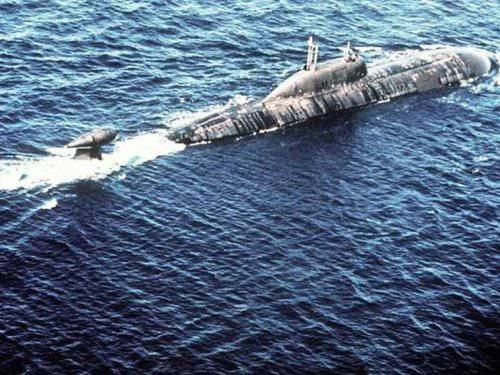
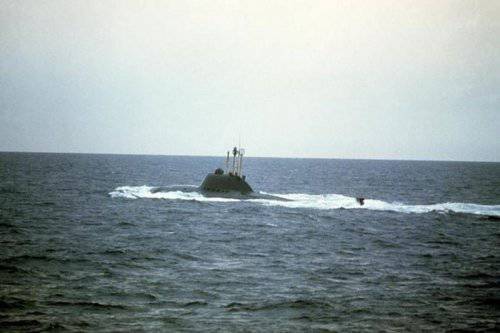
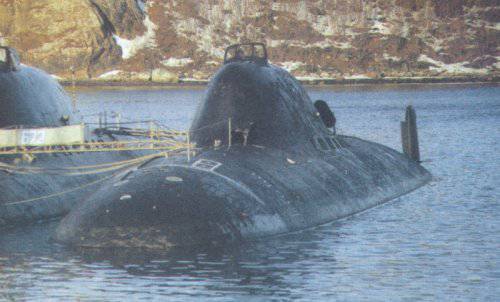
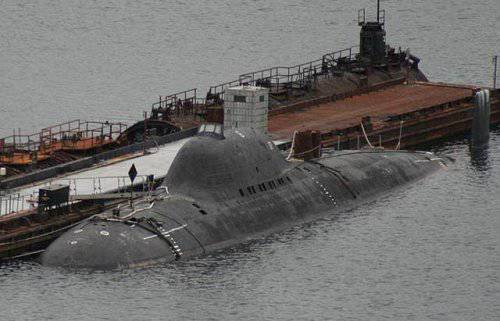
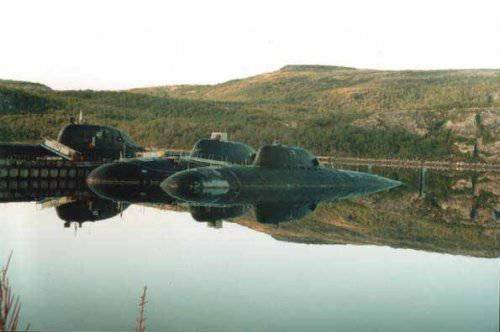
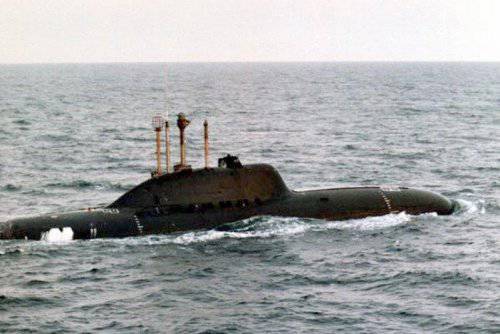
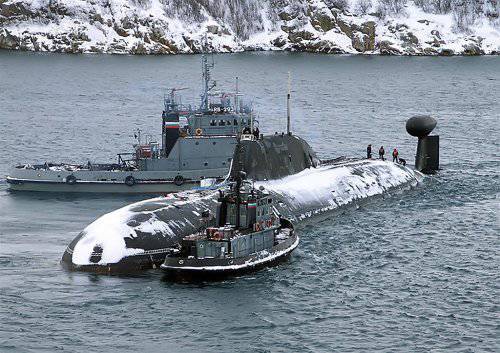
Information